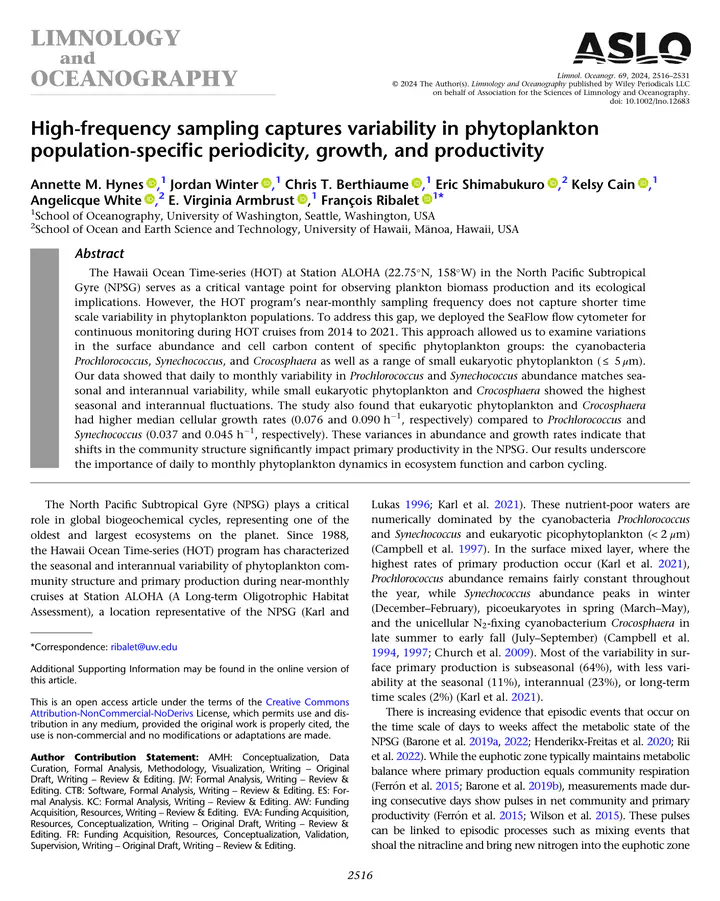High-frequency sampling captures variability in phytoplankton population-specific periodicity, growth, and productivity

Abstract
The Hawaii Ocean Time-series (HOT) at Station ALOHA (22.75°N, 158°W) in the North Pacific Subtropical Gyre (NPSG) serves as a critical vantage point for observing plankton biomass production and its ecological implications. However, the HOT program’s near-monthly sampling frequency does not capture shorter time scale variability in phytoplankton populations. To address this gap, we deployed the SeaFlow flow cytometer for continuous monitoring during HOT cruises from 2014 to 2021. This approach allowed us to examine variations in the surface abundance and cell carbon content of specific phytoplankton groups: the cyanobacteria Prochlorococcus, Synechococcus, and Crocosphaera as well as a range of small eukaryotic phytoplankton (≤ 5 μm). Our data showed that daily to monthly variability in Prochlorococcus and Synechococcus abundance matches seasonal and interannual variability, while small eukaryotic phytoplankton and Crocosphaera showed the highest seasonal and interannual fluctuations. The study also found that eukaryotic phytoplankton and Crocosphaera had higher median cellular growth rates (0.076 and 0.090h−1, respectively) compared to Prochlorococcus and Synechococcus (0.037 and 0.045h−1, respectively). These variances in abundance and growth rates indicate that shifts in the community structure significantly impact primary productivity in the NPSG. Our results underscore the importance of daily to monthly phytoplankton dynamics in ecosystem function and carbon cycling.